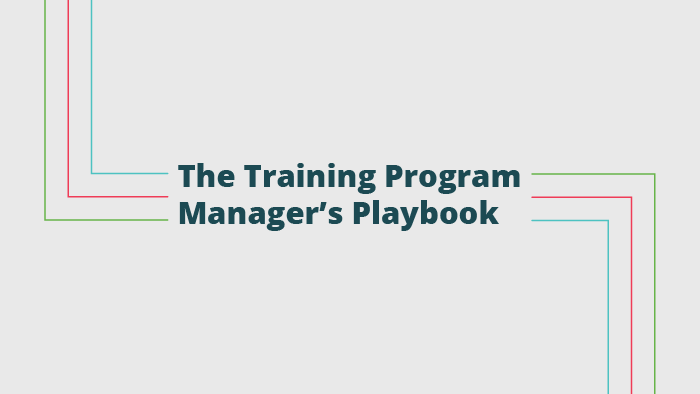
When you’re in charge of a training program at any organization, it can certainly feel like your entire work life revolves around maintaining and improving how learning happens in your organization.
When you put that much work into anything, it can be easy to wonder if you’re doing enough and if it’s truly paying off.
In one of our SHRM- and HRCI-approved webinars, we talked about the 7 Key Factors for Learning Program Success.
These seven factors serve as a valuable measuring stick, and can be used to identify gaps or weaknesses in your training program. Without further adieu, here are the 7 Key Factors for Learning Program Success!
1. Top-Level Management Support
Regular readers of our blog and listeners of our podcast might be growing weary from hearing us talk about leadership buy-in so often, but the reason leadership buy-in comes up so much is that it’s an incredibly important part of building a successful training program.
Having leadership buy-in means you have support to drive results, and you have leaders to champion and advocate learning to employees. If you’re struggling to demonstrate the value of training to your leaders, be sure to check out our article, “10 Tips to Gain Leadership Buy-In for your Training Program.”
2. Effective Communication and Marketing
It’s 2018, and training has never been more accessible! Online courses, powerful learning management systems, and other technology has made it much simpler than it used to be to deliver great learning content.
Your learners have never had more options to turn to for learning, between social media, YouTube, and your training content – and that’s a great thing.
Most of the time.
Consider if one of your sales reps is struggling with a particular concept. Would you rather they learn the techniques from content that you’ve thoroughly vetted and approved, or from a talking head on LinkedIn?
The difference between this individual making a good call (going to your content) or a bad call (listening to some random “expert” on LinkedIn) all depends on how you market your training program.
For tips on marketing your training program, be sure to check out our recent podcast episode, “Marketing Your Employee Training Program.”
3. Managing Change Through Program Management
When your organization is going through change, your training program should be able to help senior leadership, middle management, and entry-level employees navigate through that change.
Your managers should be equipped with the tools they need to implement, explain, and ultimately find success in a changing workplace.
Employees throughout your organization should be prepared to be flexible, and through soft skills training, your program can provide incredible value to a changing company.
To learn more about preparing your company for change, be sure to check out our article, “How to Prepare Your Team for Organizational Change.”
4. Aligning Training Program and Business Objectives
Your business objectives are your “why” behind training. Every training initiative should start with a business objective, and the eventual outcome of your training initiatives should revolve around those business objectives.
Particularly in organizations where leadership views training as a luxury, being able to position your training as a solution to certain problems in your organization is crucial in securing leadership buy-in.
Be sure to check out our recent podcast episode on how you can align training with your business objectives!
5. Well-Defined Key Objectives and Benefits
One of the best ways to prove that your training isn’t some sort of luxury add-on program is to know the exact benefits of your efforts.
A well-defined benefit isn’t “Morale seems to be up.” A well-defined benefit is significantly more specific than that. For instance: “Net promoter score of our workplace is up two points from last quarter and up four points year-over-year.” This is more along the lines of what your leadership wants to hear.
Your objectives should be just as specific. We’ve already mentioned how your training should be aligned with business goals, but those objectives need to be specific too. Instead of, “We want to reduce turnover,” a specific goal would be, “We want to decrease turnover by four percent by Q2 of next year.” These well-defined goals with a timeline give you the objectives you need to build a training program that will deliver results.
For more on this, check out our free infographic, “Creating Goals and Metrics in 10 Steps.”
6. Set Vision and Goals
We’ve already talked about the benefits of having well-defined objectives, but it’s equally important to create a vision and eventual goal of your training program. Define the “why” behind your training, so that when leadership, middle management, and individual contributors ask, you can be prepared with a great answer.
Check out this cheeky blog post from Jeff Havens, “Your 2-Step Process to Becoming a Visionary.”
7. Building Alliances and Partnerships
Building alliances within your organization gives you leaders who want to see your training program succeed. When you can offer them goals and clearly defined benefits in a way that gets them on board with your training, you are doing your training efforts a massive service.
Every alliance you are able to create takes work off your plate, and makes sure that the people who might be implementing and measuring your training have a little skin in the game.
Additionally, building partnerships with people in your industry, or who have similar buyers as you do gives you the chance to network with other professionals to learn ways to further enhance your training program.
For tips on building relationships within your organization, be sure to download our free ebook, “Connected Leadership: How to Invest in Your Management Teams.”
These seven factors are all nuanced and require your devotion and dedication to be completely present in your organization. However, using these factors, you can begin to evaluate the needs of your training program, and improve the way that employees view training.

